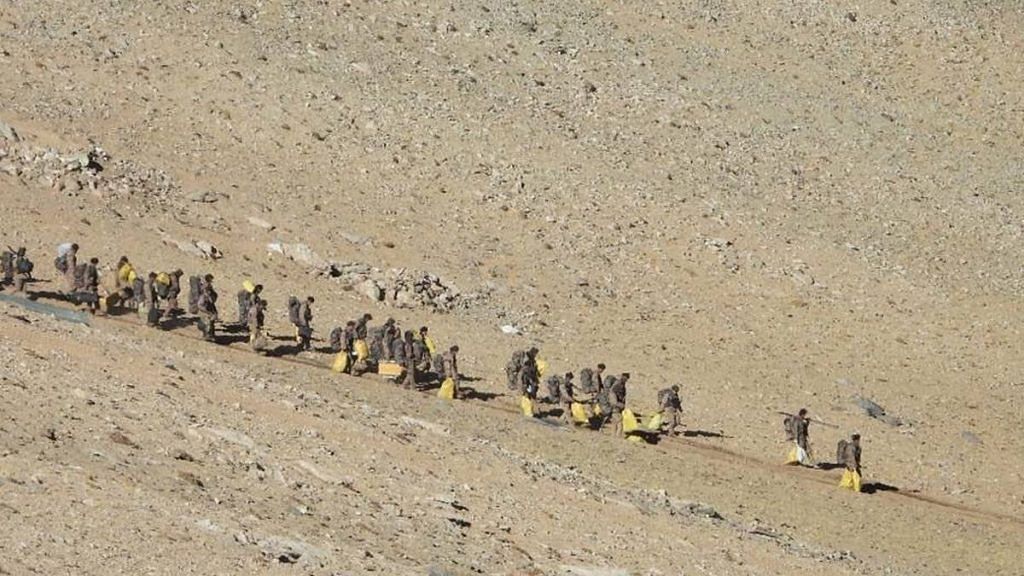New Delhi: After armoured and mechanised columns, Indian and Chinese infantry soldiers have begun disengaging from the Kailash Range south of the Pangong Tso. The process is set to be completed by Friday.
The Indian Army has released visuals of the ongoing pull-back, showing soldiers of the People’s Liberation Army dismantling their tents and camps and carrying loads to light vehicles. Large groups of soldiers can be seen ‘de-inducting’, and vehicles moving towards the rear with troops and equipment.
The visuals also show the Chinese using earth-movers or ‘JCBs’ to restore soil that was dug up to set up various pieces of infrastructure on the north and south bank of the Pangong lake. According to the disengagement deal agreed to by the two countries, all landforms are to be restored by both the sides.
Sources in the defence and security establishment said the disengagement process is “on the right track”, and as part of the agreement, soldiers have started withdrawing from the heights on the southern bank, which were occupied in an operation on the night of 29-30 August.
The withdrawal is taking place from the Gurung and Magar Hills, besides Rechin La and Rezang La on the southern bank, and from the ‘Finger Area’ on the northern bank.
“Both India and China are pulling back according to the agreement. The first focus on the south bank was the armoured and mechanised columns. China has, in total, withdrawn about 200 such vehicles. India has pulled back too. Now the focus is on infantry elements,” a source said.
As reported by ThePrint on Monday, the Chinese have already dismantled their jetty at Finger 5 and a helipad, and are in the process of taking down tents and observation posts.
Sources said that while the disengagement process is on, the verification is being done through Unmanned Aerial Vehicles and satellites.
The next round of corps commander-level talks is to be held 48 hours after withdrawal from both banks of the Pangong Tso is completed to the satisfaction of both sides.
Also read: Those criticising troop pull-back at Pangong Tso are ignorant of facts — Army ex-chief Malik
Where both sides’ troops are headed
China has pulled back its armoured and mechanised columns and troops from the southern bank to the Rutog military base, where the PLA had developed a lot of infrastructure during the stand-off.
After nine months of stand-off, India and China had finally agreed to disengage from the Pangong Tso, and the withdrawal was initiated last Wednesday.
According to the disengagement agreement, the troops around the lake will go back to pre-April 2020 locations.
On the northern bank, Indian soldiers will move back to their last permanent base in the Finger area, the Dhan Singh Thapa post of the Indo-Tibetan Border Police (ITBP), near Finger 3. Chinese troops will go back to their permanent Sirijap post beyond Finger 8, a location that they captured in the 1962 war.
However, disengagement from the strategic Depsang Plains, Gogra Post and Hot Spring area is yet to be finalised.
Also read: India hasn’t ceded territory, Depsang issue will be taken up in next round — defence ministry
